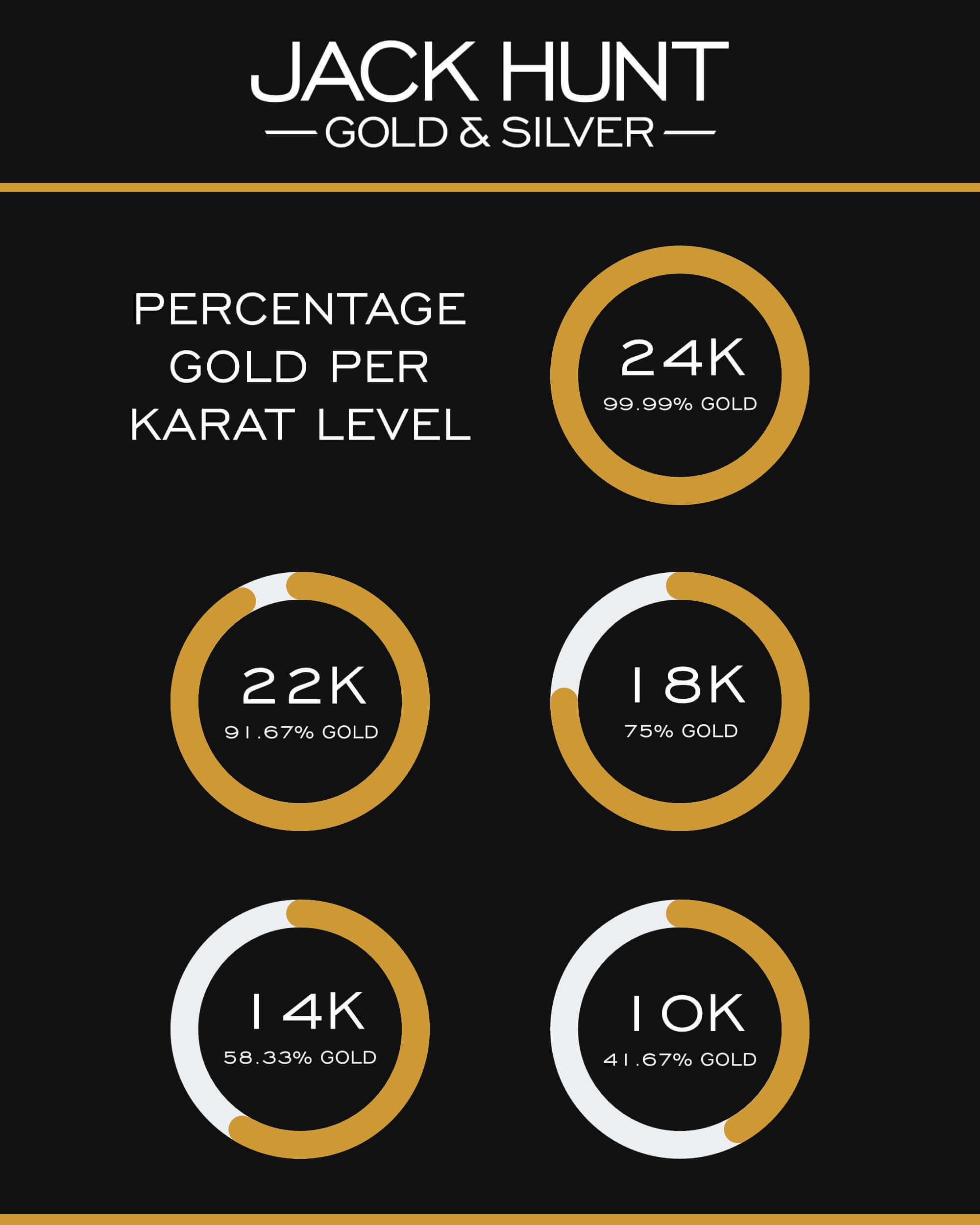View historical precious metals price charts »
View historical precious metals price charts »
Hallmarking is a tradition that dates back to France in the 1200s. This process involves labeling metals to identify their composition in order to help inform and protect buyers.
Assay offices are places where metals can be tested and given an official marking to denote their purity. These offices exist throughout the world, each with their own governance and processes for testing metals, but many marking traditions are standardized for the sake of consumers.
Jewelry markings may include a mixture of information, but a primary emphasis is the type and composition of the metals included. Additional details include the location where any assessment and manufacturing occurred.
The most common markings found indicate details such as gold purity and include:

Some items, such as costume jewelry, may feature gold or silver elements, such as gold- or silver-plating over other less valuable materials such as brass, aluminum, or copper. To contrast, fine jewelry usually contains a high percentage of gold or silver, which adds to its value. In many cases there are visual markings that indicate if an item is plated:
Jewelry and other items with plated metals markings have no precious metals value. In most cases plated items contain less than 0.05% of gold or silver.
Some manufacturers and designers throughout the world also apply their own additional hallmarks. This is especially common for high-end pieces from companies such as:
Spectrometers are an advanced and non-invasive way to analyze metals, including but certainly not limited to jewelry pieces. They work by analyzing the wavelengths that are either emitted or absorbed by the metal. This allows the tool to measure the exact composition of metals in a way that doesn’t cause any type of damage to whatever is being tested.
For example, spectrometers can definitively determine:
This type of verification is critical for ensuring any financial evaluations are completed with accuracy and appropriate offers are made to sellers.
Jack Hunt’s team uses a tabletop x-ray spectrometer (EDXRF), which provides accurate results in a matter of seconds without causing any type of damage to the items being tested. This equipment allows for further analysis with visual zoom levels up to 184x the original size of the item being sampled.
Using the information from this resource, below are examples of markings and what they mean: